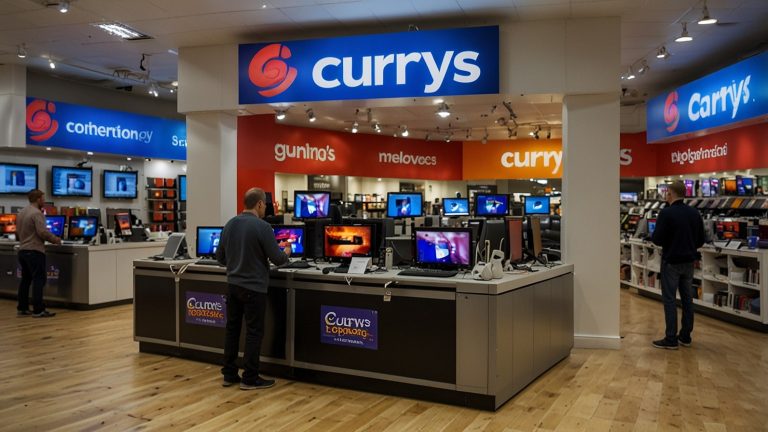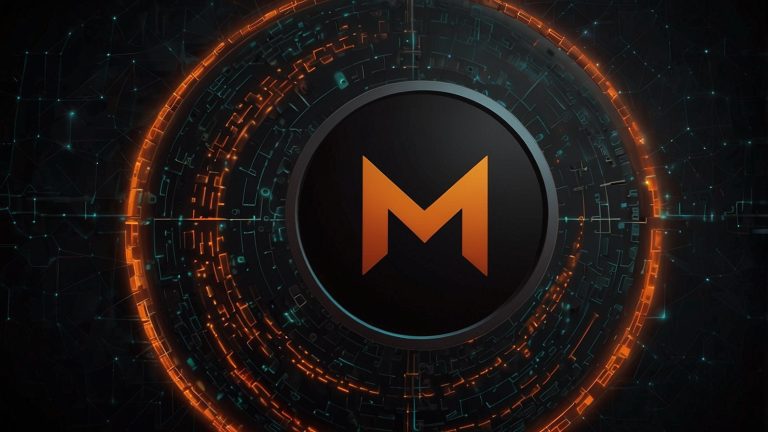Bittensor, the pioneer decentralised machine learning network, has beaten the overall trend of crypto down with a spectacular 35.7 per cent gain in the price of TAO in the last 2 weeks, with a price of $457.84 as of October 25, 2025.
Being the only cryptocurrency to register a bigger increase than Bitcoin’s humble 1.2 per cent rise and Ethereum’s consistent rise, TAO has not only recovered its losses during the infamous Crypto Black Friday crash, but it has smashed its several months-long highs, the heavy investment by Grayscale and rumours of an imminent ETF filing.
As the trades hit a record high of 943 million on October 15, more than three times September’s 2.3 billion, Bittensor’s market capital has swelled to 4.6 billion, making it the AI cryptocurrency hero in a field-wide collapse to 3.9 trillion.
This increase will be only 70 days before the first halving of Bittensor in December 2025, an event of supply shock that will reduce daily TAO emissions by half, similar to the booms of scarcity in Bitcoin.
With 54,058 tokens valued $22.6 million snatched by institutional heavyweights such as TAO Synergies, and protocol improvements driving up subnet efficiency, analysts are talking 10x to $1,000. To the traders of the volatile, the robustness of TAO is the renaissance: decentralised AI is not a hype – it is the next trillion-dollar frontier.
Grayscale’s Bold Bet: 33% Allocation Ignites Institutional Frenzy
The focus of Grayscale has brought Bittensor into the limelight with its Decentralised AI Fund investing more than a third of its assets, or 33.53% of its portfolio, in TAO as disclosed in a filing with the SEC on October 19 in its Form 10.
The initiative is a continuation of the Bitcoin ETF framework that has seen the company involve itself in, and this makes Bittensor the foundation of institutional AI exposure, which could open the door to exchange-traded products and saturate the network with liquidity.
As the assets under management at the fund exceeded 500 million dollars, this recommendation legitimises the democratisation of machine intelligence at TAO, where miners submit AI models to receive payment.
There could not be a more opportune time for filing. The mood after the crash is shaky, but the volumes of TAO have been maintained over a period of 7 days above the level of 400 million dollars, which is indicative of continuous interest.
Grayscale was pivoted after a TAO Synergies (with the support of Digital Currency Group) 11 million dollar round of private financing that saw James Altucher, the investor, refer to Bittensor as the open-source brain of Web3. This institutional tailwind might be a breakout event for retail investors, particularly given that other companies in the sector, such as Fetch.ai, have single-digit recoveries.
The regulatory obstacles, such as the scrutiny of the SEC when launching an ETF, are a red flag in the minds of the sceptics, yet the compliance-first strategy of Bittensor, such as audited emissions, will help reduce risks. One analyst even remarked that Grayscale is not betting on hype; instead, they are betting on subnets, which will drive real AI utility.
Dividing Horizon: Dec Supply Reduction Heading to TAO Explosion
As the halving fast approaches, the narrative of scarcity of Bittensor is starting to gain momentum. The event will reduce award validators and miners by half in December 2025, reducing the number of tokens that are minted per day (7,200) and restricting supply as demand increases.
Past examples of Bitcoin halvings where prices increased 300-600% in subsequent halvings have analysts predicting the same for TAO, which could soar to 1,400 by mid-2026, starting at $458.
On-chain data are an optimistic view: the number of staking participants has reached 45 per cent of the supply (8.5 million TAO) and token freezing with up to 12-15 per cent APRs that are far higher than Ethereum (4.2).
According to CryptoQuant measures, net accumulation is leading, and whales accumulated 20,000 TAO last week, although it fell temporarily by 10 per cent to $404 following a failure at the resistance of 460.
The deflationary dynamics of the halving, together with fee burns due to the October 16 subnet restructuring, which will limit the subnets to 128 with immunity periods, place Bittensor at the point of sustainable growth.
Critics have predicted post-halving dumps in the event of decreased profitability in the miner sector, whereas, due to the novel incentive model of Bittensor, the quality of the model is compensated, which makes it robust. With subnets growing to provide AI services such as natural language processing and image generation, real-world usage may absorb all the surplus supply, and make scarcity a rocket fuel to price.
Upgrades to Protocols: Subnet Reboot Decentralised AI Infrastructure
The technical development of Bittensor led to the centre stage with the introduction of subnet mechanism redesign on October 16, which substituted locked fees with dynamic burns and added the 128-subnet cap to avoid dilution.
This is a mainnet upgrade that reduces the cost of running the protocol by 40% and enhances security by imposing immunity periods, which guarantee the high-performing validators against slash risk. According to developers, the integration is smooth with a 2.5x increase in dApp throughput, allowing sophisticated AI-like federated learning across world nodes.
The upgrades solve the bottlenecks in scalability that afflicted previous versions, attracting 1,200 new validators since September, a 25 per cent increase. Bittensor implements an object-based design inspired by the model of Sui, which supports parallel computation of AI, as it can perform 50,000 inferences per second in testing.
First pilots, such as integrations with Hugging Face to work with open-source models, have been unlocked with 150 million dollars in subnet TVL, up 60% month-over-month. The issues remain: there is a danger of centralisation in the event of top subnets taking over the benefits.
However, the fact that the foundation has a grant program of 20million dollars and was announced on October 20 means it covers a wide range of AI verticals-ranging between healthcare diagnostics and autonomous agents, and as such, it is widely inclusive. The company has not only been deep-mining data, as co-founder Ala Shaabana said, but also intelligence at scale.
Price Momentum: TAO FINALLY Makes a 35 Per cent Hike to $500
The technicals of TAO are shrieking bullish continuation. Since declining to $324 in February, the token has drawn a descending triangle breakout, which reversed the resistance at $436 into support and aimed next at the level of 495-500.
At 62, RSI indicates overbought yet sustainable momentum, and a golden cross on the 4-hour chart, 50 EMA crossing 200 EMA, indicates an uptrend. The 38% average returns in October of the history of AMB Crypto, and current flows, are in line with the current flows, where the monthly volume of $7.03 billion is triple that of September.
Some have a short-term outlook: CoinCodex considers a drop to the $301 mark by October 27 in the event of a revival of macro fears, whereas CoinGape foresees the ATH of $769 revisited due to a bullish engulfing on the weekly chart. Longer horizon? Changelly estimates a maximum of 618 to 2025, and CryptoNews estimates an average of 996 to continue increasing to a high of 3,491 in 2030 as the AI market grows to 1 trillion.
Bearish catalysts such as Fed pauses are looming, but a 24-hour 11.46% pump with 38.54% weekly gain, TAO is ahead of the alts. The demand of the local market in emerging markets, where INR is being traded in the range of [?]38,500, hedges the inflation, providing a liquidity of 15% premium.
Grayscale ETF Optimism: The Mass Adoption Catalyst by the Institutions
In addition to allocations, the Grayscale Form 10 filing also appears to hint at a Bittensor Trust ETF, which may have the same success as BlackRock ETF following the GENIUS Act. The inflows of 1-2 billion in approval, by Bitget estimates, would increase the visibility and liquidity of TAO. This is amid Nasdaq-traded TAO Synergies staking its 54k hoard with a 14 per cent yield and marking the adoption of corporate treasury.
The story of ETFs coincides with the usefulness of Bittensor: now more than 200 subnets can execute real-time AI queries, whether sentiment analysis or more, and drive applications like decentralised ChatGPT clones. On October 18, Polkadot cross-chain AI data oracle partnerships are expanded, which may onboard 5 million users by the end of the year.
Play even further de-risks regulatory green lights in Hong Kong and Singapore, but U.S. delays may limit near-term upside. In the case of HODLers, the combination of compounding rewards in staking and burns makes TAO a yielding bet on the explosion of AI.
AI Crypto Wars: the Advantage Bittensor Has Over Competitors
Bittensor leaves competition behind in the decentralised AI industry. Fetch.ai has a smaller $2.5 billion cap than TAO, which has a better consensus rate, and the slower adoption is crippled by SingularityNET, which has a TVL of less than 100 million. The Yuma consensus proposed by Bittensor rewards new models, which encourages innovation that is lacking in competitors with GPU-centric models.
The light of energy efficiency: after proof-of-stake, Bittensor has a carbon footprint similar to Ethereum, and this fact is attractive to ESG funds. As AI agents spread through subnets, such as Prodigy, to generate code, Bittensor takes 40% of DeFi AI volume.
Downsides? Fades to AI hype cycles, but not the fundamentals. 1000+ daily models contribute to insulating against fades.
Future Trajectory: $1,000 TAO by 2026?
The forecasts are bullish: Lark Davis is at $740 in the short-term, $1,000 in the medium term; Motley Fool is at $1,200 after the halving. In 2030, AMB Crypto predicts a figure of 1896, but with an outlier of CryptoNews at 3491 in the event that the inflows of ETFs become significant.
Competition is one of the risks, as pivots in OpenAI blockchain may compete, or halvings may be below scarcity. However, the 35% of Bittendor following the crash resiliency attests to mettle. By the time October 25, 2025 is passes, TAO is not on the wave; it is building the AI tsunami. In the case of visionary portfolios, Bittensor calls: stake, hold, and watch intelligence compound.















 Bitcoin
Bitcoin  Ethereum
Ethereum  Tether
Tether  XRP
XRP  USDC
USDC  TRON
TRON  Lido Staked Ether
Lido Staked Ether  Cardano
Cardano  Avalanche
Avalanche  Toncoin
Toncoin  Solana
Solana